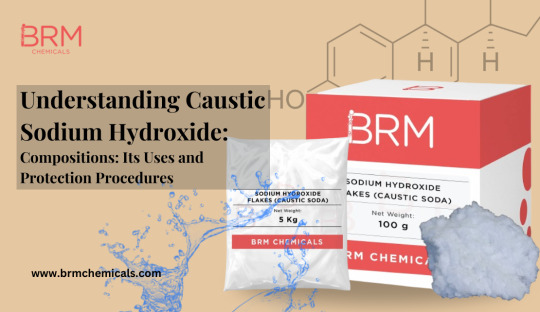#chemicalSafety
Explore tagged Tumblr posts
Text
Ensure workplace safety with Cleaning Chemical Safety Training by Lunima Safety Solution. Learn safe handling, storage, and usage of chemicals to protect your team and environment.
0 notes
Text

Labtron Ductless Fume Hood features a 910 × 690 × 740 mm chamber with a maximum opening of 650 mm and dual chemical filters. It includes UV emission of 253.7 nm for decontamination, an indoor air pollution probe, and a cold-rolled steel frame with antibacterial coating.
0 notes
Text
Imagine navigating a landscape dotted with hidden hazards; staying informed is your map, and knowledge is your compass.
In our latest B-Proactive Magazine article, ASK EHS Pvt. Ltd. Now CORE EHS delves into the NFPA 704 Chemical Identification System, highlighting its crucial role in managing chemical risks.
Uncover the importance of staying updated with this vital system and learn how it can significantly enhance workplace safety by providing clear and accessible chemical hazard information.
Stay informed, stay safe, and ensure your organization is always prepared.
Visit us at:- https://coreehs.com/occupational-health-and-safety-magazine/
#ChemicalSafety#NFPA704#WorkplaceSafety#EHS#ASKEHSPvtLtd#BProactiveMagazine#RiskManagement#HazardIdentification#SafetyFirst
0 notes
Text
HOW SHOULD CAUSTIC SODA BE STORED FOR SAFETY AND PROTECTION?
At Innoveda Chemicals, a leading caustic soda supplier in UAE, we understand the importance of safe handling and storage of chemicals. Caustic soda, Commonly referred to as sodium hydroxide (NaOH), caustic soda is an extremely adaptable industrial chemical with a wide range of uses. However, it’s crucial to store caustic soda properly due to its corrosive nature. Improper storage can lead to accidents, property damage, and environmental hazards.
This blog post will serve as a guide for safe caustic soda storage practices. We’ll cover essential aspects like appropriate containers, temperature control, containment measures, and important safety precautions. By following these guidelines, you can ensure the safe storage of caustic soda and minimize potential risks.

Understanding Caustic Soda and its Storage Needs:
Caustic soda is an alkaline substance available in various forms, including flakes, beads, and liquids. Because it is hygroscopic, moisture from the air is easily absorbed by it. This can cause the solid forms to dissolve (turn into liquid) and weaken container integrity. Additionally, caustic soda reacts exothermically with water, generating heat.
Therefore, proper storage is vital to prevent container degradation, accidents, and environmental contamination.
Choosing the Right Containers for Caustic Soda:
The appropriate container selection for caustic soda storage depends on several factors, including:
Form of Caustic Soda:
Liquids: Stainless steel tanks or drums with polyethylene liners are ideal for liquid caustic soda. These materials offer excellent corrosion resistance.
Solids: For solid forms like flakes or beads, high-density polyethylene (HDPE) drums or bags with impermeable polyester yarn closures are preferred. HDPE offers good strength and chemical resistance.
Quantity: The size and quantity of caustic soda you’ll be storing will determine the container size needed. Drums are suitable for smaller quantities, while larger facilities might require dedicated storage tanks.
Environmental Conditions: Consider the storage area’s temperature and humidity. Opt for containers resistant to degradation under the expected environmental conditions.
Creating a Safe Storage Environment
Once you’ve chosen the appropriate containers, it’s crucial to create a designated storage area that adheres to safety protocols. Here’s what to consider:
Location:
Cool and Dry: Store caustic soda in a cool, dry, and well-ventilated area. Avoid direct sunlight, which can elevate temperatures and accelerate degradation.
Away from Incompatible Materials: Never store caustic soda near acids, oxidizing agents, or flammable materials. These combinations can lead to violent reactions.
Secondary Containment: Implement secondary containment measures like spill trays or dikes around storage containers. This will contain any potential leaks or spills, preventing environmental contamination.
Temperature Control:
Maintain Optimal Temperature: Ideally, store caustic soda within a temperature range of 5°C to 30°C (41°F to 86°F). Extreme temperatures can affect container integrity and product quality.
Heating Considerations: For storing liquid caustic soda in colder climates, consider heated storage tanks or adding heating elements to maintain the optimal temperature range.
Safety Signage and Procedures
Clear Labeling: Ensure all caustic soda containers are clearly labeled with the product name, hazard symbols, and safety information.
Safety Data Sheets (SDS): Maintain readily accessible copies of the Safety Data Sheet (SDS) for caustic soda in the storage area. The SDS provides crucial information on potential hazards, handling procedures, and first-aid measures.
Emergency Procedures: Develop and implement clear emergency procedures for handling potential spills or leaks. Train personnel on these procedures to ensure a quick and effective response in case of an incident.
Essential Safety Precautions for Caustic Soda Storage
Here are some additional safety precautions to remember when storing caustic soda:
Personal Protective Equipment (PPE): Always wear appropriate PPE, including chemical-resistant gloves, safety goggles, and aprons, when handling caustic soda.
Proper Ventilation: Ensure adequate ventilation in the storage area to prevent inhalation of caustic soda fumes.
Regular Inspections: Conduct regular inspections of containers and storage areas to identify any signs of damage, leaks, or corrosion. Address any issues promptly.
Spill Response Kit: Maintain a readily accessible spill response kit in the storage area. This will allow for immediate containment and cleanup of any potential spills.
Innoveda Chemicals: Committed to Safe Caustic Soda Handling
At Innoveda Chemicals, a leading caustic soda supplier in UAE, we prioritize the safety of our customers and the environment. We offer high-quality caustic soda products while providing comprehensive information and support on safe handling and storage practices. These guidelines and partnering with a reliable caustic soda supplier in UAE like Innoveda Chemicals, can ensure the safe and responsible storage of caustic soda, minimizing risks and promoting a safe working environment.
Conclusion:
In summary, at Innoveda Chemicals, we prioritize the safety and proper storage of caustic soda. Ensure it is kept in a cool, dry, and well-ventilated area, away from incompatible substances. Use appropriate containers and protective gear when handling. By following these guidelines, you can safely manage caustic soda.
Visit our website for more tips and high-quality products.
#CausticSoda#SodiumHydroxide#ChemicalSafety#SafeStorage#HazardousMaterials#IndustrialChemicals#ChemicalHandling
0 notes
Text

Ductless Fume Hood
0 notes
Text
#ERPNext#ChemicalIndustry#PharmaceuticalERP#ComplianceManagement#InventoryManagement#BatchTracking#ProductionPlanning#RegulatoryCompliance#R&DManagement#CostControl#DemandForecasting#SupplierManagement#BatchRecall#RealTimeAnalytics#MultiLocationManagement#EmployeeProductivity#QualityControl#FormulationManagement#LaboratoryManagement#ChemicalSafety#PharmaceuticalSupplyChain#DocumentManagement#ProductionScheduling#ProcessAutomation#InventoryOptimization#RegulatoryReporting#EnvironmentalCompliance#CostTracking#SalesOrderManagement#PurchaseOrderManagement
1 note
·
View note
Text
The Role of Caustic Sodium Hydroxide in Industrial Cleaning
Introduction
Industrial cleaning is a critical aspect of maintaining equipment, ensuring operational efficiency, and adhering to health and safety standards across various industries. Sodium hydroxide, commonly known as caustic soda or lye, plays a pivotal role in industrial cleaning due to its powerful chemical properties. This article explores how sodium hydroxide is utilized in industrial cleaning, its benefits, applications, and the precautions necessary for its safe use.

Chemical Properties of Sodium Hydroxide
Sodium hydroxide (NaOH) is a highly alkaline substance with a strong ability to break down organic materials and neutralize acids. Its chemical properties make it exceptionally effective for cleaning purposes.
Key Properties:
Strong Alkalinity: NaOH has a pH of around 14, making it a very strong base.
Solubility: It is highly soluble in water, and its solutions can range from low to high concentrations.
Reactivity: Sodium hydroxide reacts with fats, oils, and greases to form soap, a process known as saponification.
Applications in Industrial Cleaning
Sodium hydroxide is employed in a wide range of industrial cleaning applications due to its efficiency in removing stubborn contaminants and residues.
1. Equipment and Machinery Cleaning
Industrial equipment and machinery often accumulate tough residues such as grease, oil, and other organic materials. Sodium hydroxide solutions effectively dissolve these contaminants, ensuring that equipment operates smoothly and efficiently. This cleaning process is essential in industries like food processing, where hygiene standards are paramount.
2. Tank and Pipeline Cleaning
In industries such as petrochemicals and manufacturing, tanks and pipelines can become clogged or coated with residues that impede flow and efficiency. Caustic soda is used to clean and maintain these systems, ensuring that blockages are cleared and that materials can flow without obstruction.
3. Surface Preparation
Before the application of paints, coatings, or other surface treatments, it is crucial to have a clean and contaminant-free surface. Sodium hydroxide is used to clean and prepare surfaces by removing grease, oils, and other residues, providing a better adhesion surface for coatings.
4. Textile Industry
In the textile industry, sodium hydroxide is used in the mercerization process, which strengthens cotton fibers and improves their dye uptake. It also helps in cleaning and scouring fabrics to remove natural oils, waxes, and other impurities.
Benefits of Using Sodium Hydroxide in Industrial Cleaning
The use of sodium hydroxide in industrial cleaning offers several advantages:
Effectiveness: Its strong alkaline nature makes it highly effective at breaking down a wide range of organic materials.
Cost-Efficiency: Sodium hydroxide is relatively inexpensive and readily available, making it a cost-effective cleaning solution.
Versatility: It can be used in various concentrations and applications, providing flexibility in cleaning processes.
Speed: NaOH works quickly to dissolve and emulsify contaminants, reducing cleaning time.
Safety Considerations and Precautions
While sodium hydroxide is a powerful cleaning agent, it is also highly caustic and can pose significant risks if not handled properly. Safety measures are crucial to protect workers and the environment.
Safety Tips:
Personal Protective Equipment (PPE): Workers should wear appropriate PPE, including gloves, goggles, and protective clothing.
Proper Ventilation: Ensure adequate ventilation in areas where sodium hydroxide is used to avoid inhaling fumes.
Training: Workers should be trained in the proper handling and emergency procedures related to sodium hydroxide.
Storage: Store NaOH in a cool, dry place, away from acids and moisture, and in containers resistant to strong bases.
First Aid: In case of contact with skin or eyes, immediately rinse with plenty of water and seek medical attention.
Environmental Considerations
Disposing of sodium hydroxide requires careful consideration to avoid environmental damage. Neutralize NaOH solutions with a weak acid (such as vinegar) before disposal and follow local regulations for hazardous waste management.
Conclusion
Sodium hydroxide is an indispensable component in industrial cleaning, offering powerful and effective solutions for removing a wide range of contaminants. Its benefits in enhancing operational efficiency, maintaining equipment, and ensuring hygiene standards are significant. However, the caustic nature of NaOH necessitates strict adherence to safety protocols to protect workers and the environment. Understanding and leveraging the properties of sodium hydroxide can lead to more efficient and effective industrial cleaning practices.
0 notes
Text
At Pioneer Chemical Mart, your premier destination for a wide array of raw materials including chemical & solvents, cosmetic ingredients, chemicals & additives, ceramic & pottery, and more. Our website, Pioneer Chemical, is your one-stop-shop for all your raw material needs. In this blog, we will delve into the world of cosmetic raw ingredients, exploring their significance in beauty product formulation and how Pioneer Chemical Mart can be your trusted supplier.
#PioneerChemicalMart#ChemicalSuppliers#RawMaterials#CosmeticIngredients#ChemicalSafety#QualityAssurance#ChemicalStorage
0 notes
Text
April 16, 1947, marks one of the darkest days in American industrial history – the Texas City disaster. This catastrophic event, which occurred in the bustling port of Texas City, Texas, stands as a somber reminder of the potential dangers in industrial operations and the importance of safety regulations. The Fateful Day The disaster unfolded…
#Explosion#AmmoniumNitrate#ChemicalSafety#DisasterResponse#EmergencyManagement#HistoricalDisasters#IndustrialAccident#PortExplosions#SafetyRegulations#SSGrandcamp#TexasCityDisaster#TexasCity#TexasCityMemorial#IndustrialHistory#frnwh
1 note
·
View note
Text

Petrochemical and Process Safety Engineering by Green World Group
Green World Group is a leading provider of training and consultancy services in the field of Petrochemical and Process Safety Engineering. They offer a wide range of courses and services designed to help individuals and organizations achieve excellence in safety and risk management within the petrochemical industry.
Visit Us : www.greenwgroup.org Contact Us : +918089011469 Email : [email protected]
#GreenWorldSafety#PetroSafetyEngineering#ProcessSafety#GreenWorldGroup#SafetyFirst#ChemicalSafety#PetrochemicalEngineering#SafetyTraining#IndustrialSafety
0 notes
Text
What chemicals are required to have a SDS?
youtube
Chemicals that pose potential health and safety risks are required to have a Safety Data Sheet (SDS). These sheets provide crucial information about the properties, hazards, and safe handling of the chemical. A catchy video description for promoting a video on SDS could be: "Unveiling the Secrets of Safety Data Sheets! 🌐 Dive into the world of chemical safety with our informative video. Learn why SDS is crucial, how to read it, and ensure a safer workplace!
#ChemicalSafety#SDSExplained#WorkplaceSafety#SafetyFirst#ChemicalHandling#KnowYourChemicals#SafetyDataSheet101#StayInformed#HealthAndSafety#EmpowerWithKnowledge#Youtube
0 notes
Text
MSDS Certificate — Apply Online, Documents, Process
Material Safety Data Sheet, commonly known as MSDS, is a supporting/internal document that contains detailed information on the components or substances used in a product. It is used to declare specific hazards associated with dangerous materials, components, or substances.
MSDS also contains precautionary measures that need to be taken while handling & disposing of hazardous materials. It is important to note that obtaining an MSDS certificate from a test laboratory is not mandatory. However, the MSDS (Material Safety Data Sheet) is legally required by countries that import dangerous materials and goods made of such substances.
The material safety data sheet is a technical document that contains all the required information such as chemical behaviors, hazard identification, and safety precautions regarding the substance used in the products that are being imported into the country.

MSDS Certificate is required by entities dealing with hazardous category products for various purposes:
Supporting documents for shipments
Declaration by Exporters
Complying with regulations and restrictions while shipping internationally
MSDS is mandatory in Europe and North America
For compliance with OHSAS 18001
*If you want to know about EPR Registration, NGO Darpan Registration, GeM Registration, or APEDA Registration
#MSDSCertificate#MaterialSafetyDataSheet#ChemicalSafety#SafetyDocumentation#ChemicalCompliance#ChemicalSafetyStandards#ChemicalDataSheet#HazardousMaterials#MSDSCompliance#SafetyFirst#ChemicalHandling#WorkplaceSafety#ChemicalRiskManagement#SafetyCertification#ChemicalHealth#SafetyData#EnvironmentalSafety#OccupationalSafety#ChemicalRegulations#MSDSGuidelines
0 notes
Text
#electricalSafety#chemicalIndustries#pharmaceuticalIndustries#electricalHazards#chemicalSafety#pharmaceuticalSafety#electricalRisks
0 notes
Text




Maximize Safety and Efficiency with our Fume Hoods and Laminar Air Flows! Protecting your Biogene work with precision and care. 🧪🔬
"Biosafety at its Best! Explore our top-notch Biosafety Cabinets, Fume Hoods, and Laminar Air Flows for seamless biogene operations.
Visit Here For More:- https://bit.ly/3O5HggL
#FumeHood #LabSafety #ChemicalSafety #AirFlowControl #CleanAir #LaminarFlow #HorizontalLaminarFlow #VerticalLaminarFlow #BiosafetyCabinet #Biogene #LaboratoryEquipment #ContaminationControl #BioSafety #CleanEnvironment #LaboratorySafety #ScientificResearch #AirQuality #BiosafetyStandards #SterileEnvironment #FilteredAir
#FumeHood#LabSafety#ChemicalSafety#AirFlowControl#CleanAir#LaminarFlow#HorizontalLaminarFlow#VerticalLaminarFlow#BiosafetyCabinet#Biogene#LaboratoryEquipment#ContaminationControl#BioSafety#CleanEnvironment#LaboratorySafety#ScientificResearch#AirQuality#BiosafetyStandards#SterileEnvironment#FilteredAir
0 notes
Text

Ductless Fume Hood
0 notes
Text
#ERPNext#ChemicalIndustry#PharmaceuticalERP#ComplianceManagement#InventoryManagement#BatchTracking#ProductionPlanning#RegulatoryCompliance#RDManagement#CostControl#DemandForecasting#SupplierManagement#RecallManagement#RealTimeAnalytics#MultiLocationManagement#EmployeeProductivity#QualityControl#FormulationManagement#LaboratoryManagement#ChemicalSafety#SupplyChainManagement#DocumentManagement#ProductionScheduling#ProcessAutomation#InventoryOptimization#RegulatoryReporting#EnvironmentalCompliance#CostTracking#SalesOrderManagement#PurchaseOrderManagement
1 note
·
View note